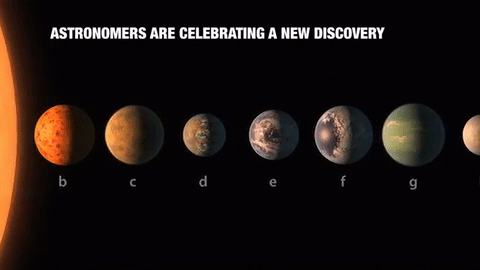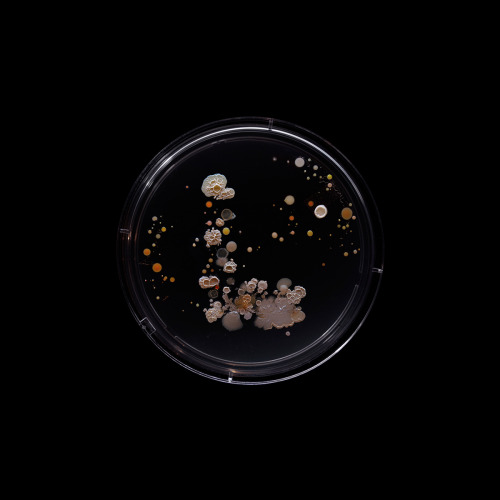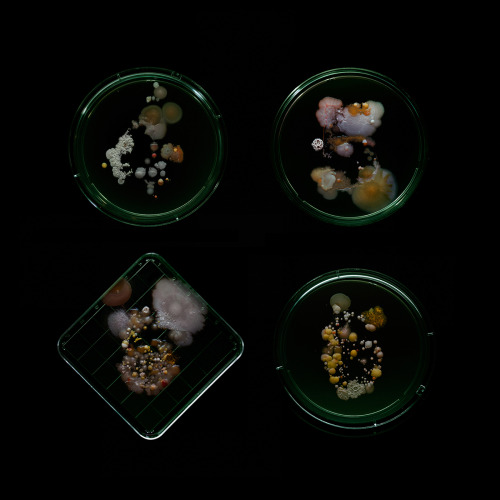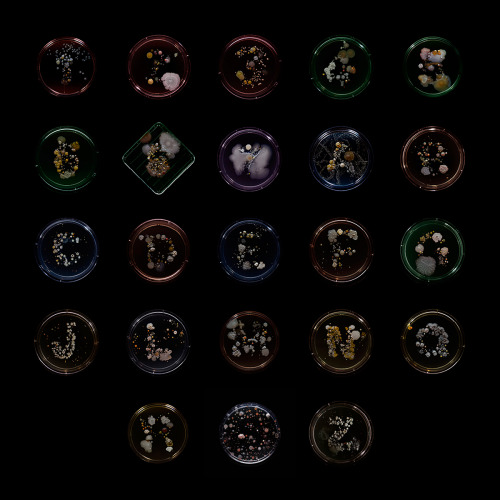Aurora - Nutirwik Creek, Brooks Range, Alaska | By Fred Wasmer

Aurora - Nutirwik Creek, Brooks Range, Alaska | by Fred Wasmer
More Posts from The-sleepy-chemist and Others
maybe if im under enough blankets, the Responsibilities wont be able to find me
Largest Batch of Earth-size, Habitable Zone Planets
Our Spitzer Space Telescope has revealed the first known system of seven Earth-size planets around a single star. Three of these planets are firmly located in an area called the habitable zone, where liquid water is most likely to exist on a rocky planet.

This exoplanet system is called TRAPPIST-1, named for The Transiting Planets and Planetesimals Small Telescope (TRAPPIST) in Chile. In May 2016, researchers using TRAPPIST announced they had discovered three planets in the system.

Assisted by several ground-based telescopes, Spitzer confirmed the existence of two of these planets and discovered five additional ones, increasing the number of known planets in the system to seven.

This is the FIRST time three terrestrial planets have been found in the habitable zone of a star, and this is the FIRST time we have been able to measure both the masses and the radius for habitable zone Earth-sized planets.
All of these seven planets could have liquid water, key to life as we know it, under the right atmospheric conditions, but the chances are highest with the three in the habitable zone.

At about 40 light-years (235 trillion miles) from Earth, the system of planets is relatively close to us, in the constellation Aquarius. Because they are located outside of our solar system, these planets are scientifically known as exoplanets. To clarify, exoplanets are planets outside our solar system that orbit a sun-like star.

In this animation, you can see the planets orbiting the star, with the green area representing the famous habitable zone, defined as the range of distance to the star for which an Earth-like planet is the most likely to harbor abundant liquid water on its surface. Planets e, f and g fall in the habitable zone of the star.
Using Spitzer data, the team precisely measured the sizes of the seven planets and developed first estimates of the masses of six of them. The mass of the seventh and farthest exoplanet has not yet been estimated.

For comparison…if our sun was the size of a basketball, the TRAPPIST-1 star would be the size of a golf ball.
Based on their densities, all of the TRAPPIST-1 planets are likely to be rocky. Further observations will not only help determine whether they are rich in water, but also possibly reveal whether any could have liquid water on their surfaces.
The sun at the center of this system is classified as an ultra-cool dwarf and is so cool that liquid water could survive on planets orbiting very close to it, closer than is possible on planets in our solar system. All seven of the TRAPPIST-1 planetary orbits are closer to their host star than Mercury is to our sun.

The planets also are very close to each other. How close? Well, if a person was standing on one of the planet’s surface, they could gaze up and potentially see geological features or clouds of neighboring worlds, which would sometimes appear larger than the moon in Earth’s sky.

The planets may also be tidally-locked to their star, which means the same side of the planet is always facing the star, therefore each side is either perpetual day or night. This could mean they have weather patterns totally unlike those on Earth, such as strong wind blowing from the day side to the night side, and extreme temperature changes.

Because most TRAPPIST-1 planets are likely to be rocky, and they are very close to one another, scientists view the Galilean moons of Jupiter – lo, Europa, Callisto, Ganymede – as good comparisons in our solar system. All of these moons are also tidally locked to Jupiter. The TRAPPIST-1 star is only slightly wider than Jupiter, yet much warmer.
How Did the Spitzer Space Telescope Detect this System?
Spitzer, an infrared telescope that trails Earth as it orbits the sun, was well-suited for studying TRAPPIST-1 because the star glows brightest in infrared light, whose wavelengths are longer than the eye can see. Spitzer is uniquely positioned in its orbit to observe enough crossing (aka transits) of the planets in front of the host star to reveal the complex architecture of the system.

Every time a planet passes by, or transits, a star, it blocks out some light. Spitzer measured the dips in light and based on how big the dip, you can determine the size of the planet. The timing of the transits tells you how long it takes for the planet to orbit the star.

The TRAPPIST-1 system provides one of the best opportunities in the next decade to study the atmospheres around Earth-size planets. Spitzer, Hubble and Kepler will help astronomers plan for follow-up studies using our upcoming James Webb Space Telescope, launching in 2018. With much greater sensitivity, Webb will be able to detect the chemical fingerprints of water, methane, oxygen, ozone and other components of a planet’s atmosphere.
At 40 light-years away, humans won’t be visiting this system in person anytime soon…that said…this poster can help us imagine what it would be like:

Make sure to follow us on Tumblr for your regular dose of space: http://nasa.tumblr.com




Next week I’ll give a presentation on the Researchers Night at Eötvös Loránd University, Hungary with the title: “Chemistry of light and the light of chemistry”.
During this presentation one of my favorite dyes will be also presented: Nile Red. However, just as usual, the 1000 USD/gram price was a bit over our budget, so I had to make it.
The raw product was contaminated with a few impurities, but a fast purification, by simple filtering the mixture through a short column helped a lot and ended up with a +95% pure product.
At first I concentrated the product from a dilute solution on the column as seen on the first pics. It’s interesting to see, that it has a different fluorescence in solution (faint orange fluorescent) and while it’s absorbed on the solid phase (pink, highly fluorescent).
After all the product was on the solid phase, I added another solvent and washed down the pure, HIGHLY FLUORESCENT product. Everything else, what was mainly products of side reactions, stuck at the top of the column as seen on the second pics and the gifs.
Also here is a video from the whole process in HD: https://youtu.be/W0Lk5jkd_B0




Cyanea capillata by Alexander Semenov

Bobbit Worm. By: ken & anita’s photos
The Bobbit worm, Eunice aphroditois, is a ferocious underwater predator. Armed with sharp teeth, it is known to attack with such speeds that its prey is sometimes sliced in half. Though they do vary in size, they have been recorded to grow up to nine feet tall.

Maple syrup could help fight bacterial infections, Canadian scientists find
Maple syrup is once again making headlines for being the rockstar condiment that every Canadian knows it is, but it’s not the culinary world that’s buzzing this time — it’s the medical world. Newly released research from McGill University in Montreal suggests that concentrated maple syrup extract may actually help fight bacterial infections, potentially reducing the need for antibiotics around the world. “Combining maple syrup extract with common antibiotics could increase the microbes’ susceptibility, leading to lower antibiotic usage,” reads a press release issued by the university Friday. “Overuse of antibiotics fuels the emergence of drug-resistant bacteria, which has become a major public-health concern worldwide.”
Continue Reading.
How Smells Trigger Memories By SciShow
SciShow explains how smells can bring back early memories – even memories that your brain didn’t know you had.
Hosted by: Hank Green
We Are Built To Be Kind
Greed is good. War is inevitable. Cooperation is for suckers.
Whether in political theory or popular culture, human nature is often portrayed as selfish and power hungry. UC Berkeley psychologist Dacher Keltner challenges this notion of human nature and seeks to better understand why we evolved pro-social emotions like empathy, compassion and gratitude.
Subscribe to Fig. 1 on YouTube

Happiness Molecule



Subvisual Subway - Bacteria of the New York City subway- Craig Ward
-
 stonedlittlewraithx reblogged this · 8 months ago
stonedlittlewraithx reblogged this · 8 months ago -
 omgherbalicious reblogged this · 8 months ago
omgherbalicious reblogged this · 8 months ago -
 omgherbalicious liked this · 8 months ago
omgherbalicious liked this · 8 months ago -
 itamiblue28 liked this · 10 months ago
itamiblue28 liked this · 10 months ago -
 ronaldsprowel liked this · 10 months ago
ronaldsprowel liked this · 10 months ago -
 thebluecallsme liked this · 10 months ago
thebluecallsme liked this · 10 months ago -
 nagasarennayoex reblogged this · 10 months ago
nagasarennayoex reblogged this · 10 months ago -
 nagasarennayoex liked this · 10 months ago
nagasarennayoex liked this · 10 months ago -
 cariboy75 liked this · 1 year ago
cariboy75 liked this · 1 year ago -
 blackwoma-n liked this · 1 year ago
blackwoma-n liked this · 1 year ago -
 copal-sq liked this · 1 year ago
copal-sq liked this · 1 year ago -
 jack-all-trade liked this · 1 year ago
jack-all-trade liked this · 1 year ago -
 mitchagain740 reblogged this · 1 year ago
mitchagain740 reblogged this · 1 year ago -
 mitchagain740 liked this · 1 year ago
mitchagain740 liked this · 1 year ago -
 hello-furry-one reblogged this · 1 year ago
hello-furry-one reblogged this · 1 year ago -
 hello-furry-one liked this · 1 year ago
hello-furry-one liked this · 1 year ago -
 livingboldly reblogged this · 3 years ago
livingboldly reblogged this · 3 years ago -
 sinnersparanoia reblogged this · 4 years ago
sinnersparanoia reblogged this · 4 years ago -
 queenajd reblogged this · 4 years ago
queenajd reblogged this · 4 years ago -
 yags007 liked this · 4 years ago
yags007 liked this · 4 years ago -
 cassiusdanus liked this · 4 years ago
cassiusdanus liked this · 4 years ago -
 missyoudamn reblogged this · 4 years ago
missyoudamn reblogged this · 4 years ago -
 nolimittevin reblogged this · 5 years ago
nolimittevin reblogged this · 5 years ago -
 briannfontana liked this · 5 years ago
briannfontana liked this · 5 years ago -
 thisacidreign liked this · 5 years ago
thisacidreign liked this · 5 years ago -
 tea-withnofixinsplease reblogged this · 5 years ago
tea-withnofixinsplease reblogged this · 5 years ago -
 tea-withnofixinsplease liked this · 5 years ago
tea-withnofixinsplease liked this · 5 years ago -
 anpaintsthemoon reblogged this · 5 years ago
anpaintsthemoon reblogged this · 5 years ago -
 tomsilb liked this · 6 years ago
tomsilb liked this · 6 years ago -
 angiiex-o reblogged this · 6 years ago
angiiex-o reblogged this · 6 years ago -
 loweitman liked this · 6 years ago
loweitman liked this · 6 years ago -
 happinessisshootingshit liked this · 6 years ago
happinessisshootingshit liked this · 6 years ago -
 halimauu-blog liked this · 6 years ago
halimauu-blog liked this · 6 years ago -
 danzai liked this · 6 years ago
danzai liked this · 6 years ago -
 yourlinalinalina liked this · 6 years ago
yourlinalinalina liked this · 6 years ago -
 coolstoreyy liked this · 6 years ago
coolstoreyy liked this · 6 years ago -
 welcometotacobelleatandenjoy reblogged this · 6 years ago
welcometotacobelleatandenjoy reblogged this · 6 years ago -
 wanderlustdreamerr reblogged this · 6 years ago
wanderlustdreamerr reblogged this · 6 years ago
60 posts